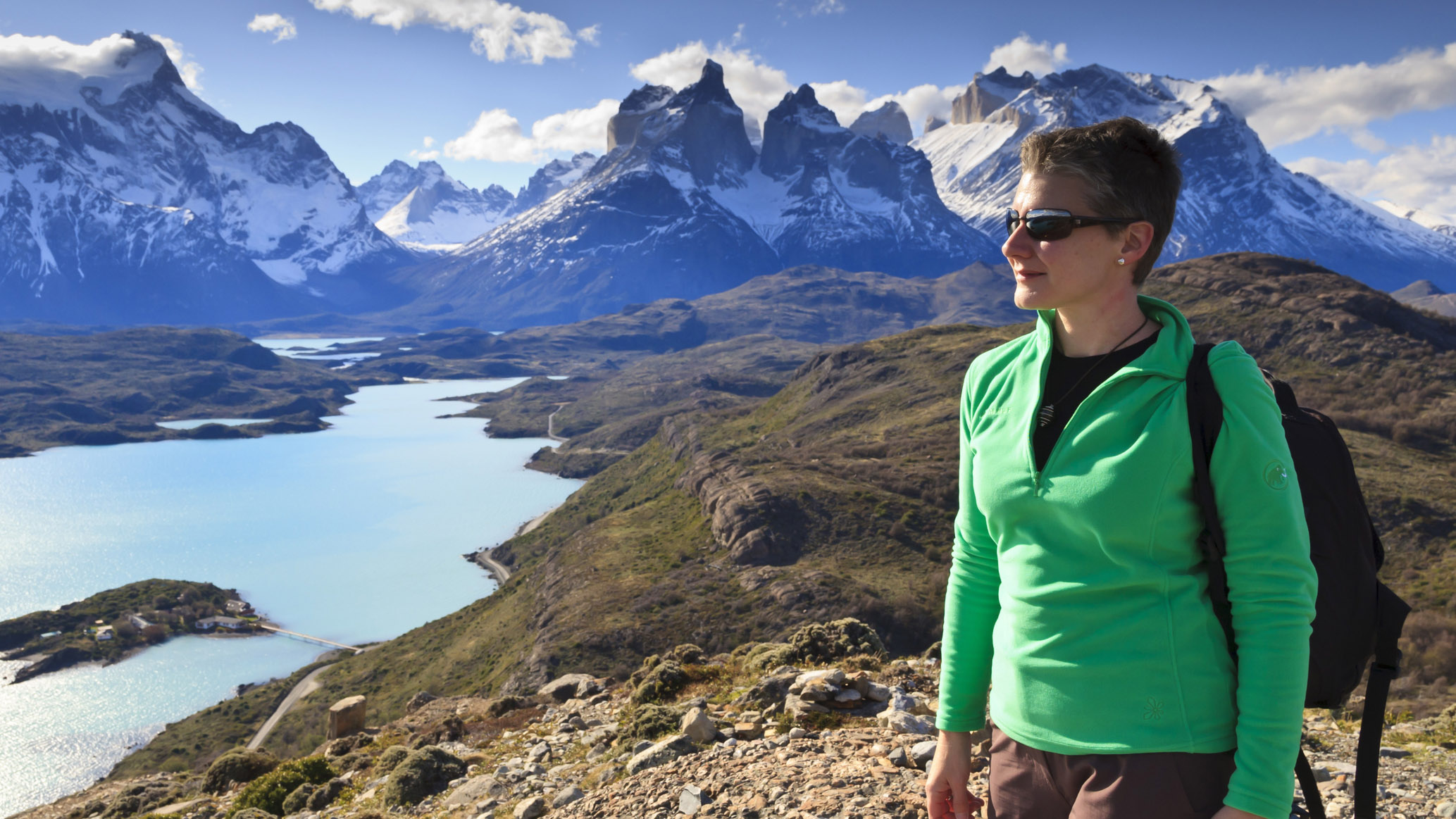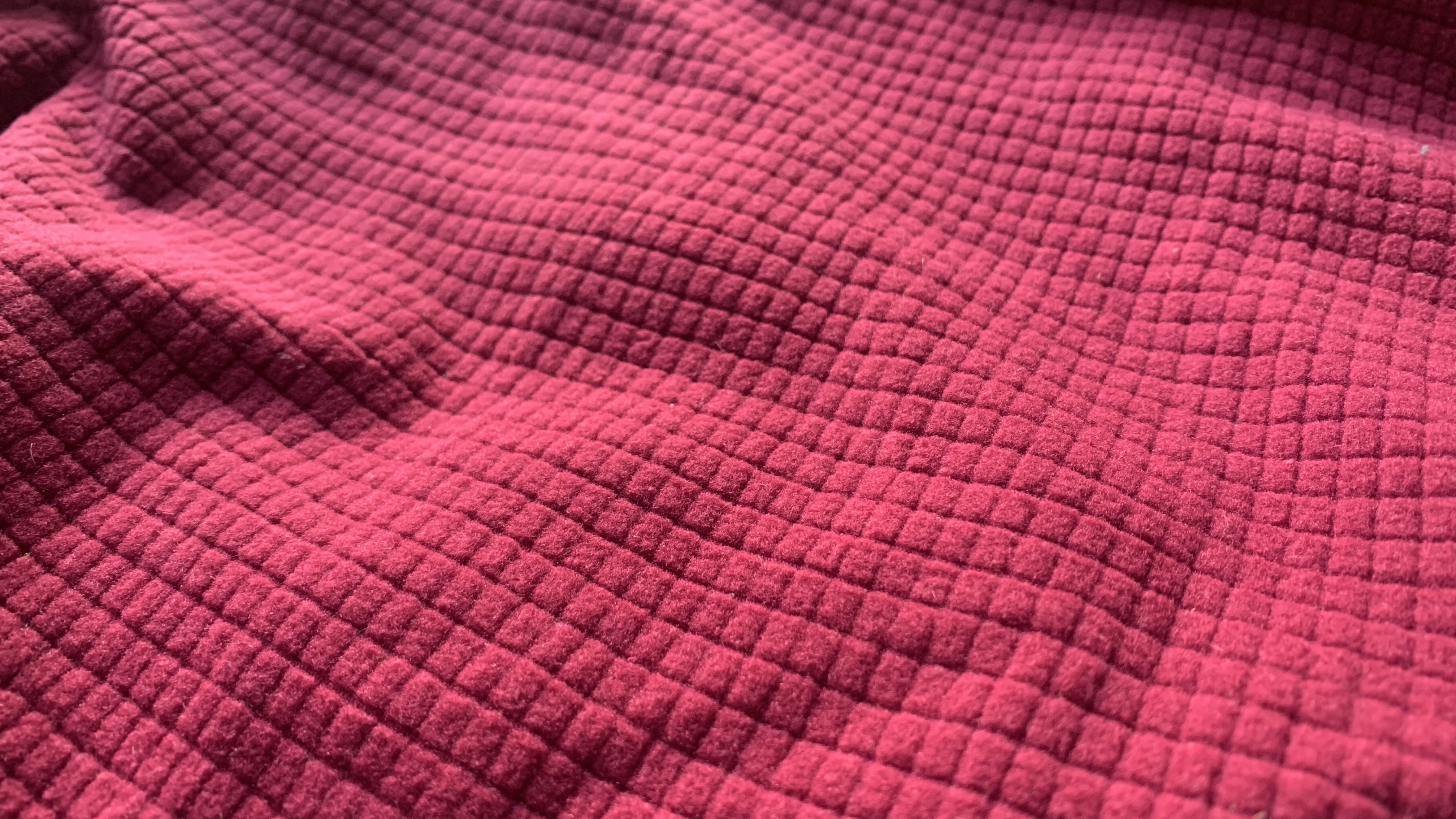Fleece vs wool: what makes a better insulator for hiking?
We compare microfleece tops against wool base layers to see if we can find a winner for warmth, moisture management and durability on your adventures

Hitting the trails regularly takes more than just finding a route on your favorite navigation app and lacing up your hiking boots. When it comes to mother nature, you’ll be amazed at how much time and thought goes into making sure you’re warm enough, but not too warm, and managing your sweat so that you can cool down, but not get too cool. It’s a tricky world, but fortunately we have amazing fabric technologies like merino wool and fleece to help us navigate it. When it comes to fleece vs wool, however, you might be wondering – which is better?
If you’re a seasoned hiker, it might seem a bit strange to you to compare fleece to wool. After all, according to the unbreakable laws of the hiking layer system, you should be wearing a wool base layer with a fleece jacket over the top, right? Well, sure, when it’s really cold out, this makes for an excellent approach, especially when you complete it with a waterproof shell over the top.
When it’s not freezing cold, however, you might do away with your mid layer, and these days, we’re seeing super light microfleece tops like the Montane Protium Lite which actually make pretty solid base layers, or even outer layers for mild, dry summer hikes. In the interests of economics and durability, you might be considering replacing your dogged old merino wool base layer and go modern with a microfleece long sleeve top, but concerned about performance.
In this article, we’re not comparing a wool base layer to a heavy fleece jacket; rather, we’re pitting the two fabrics head-to-head when they’re used to create light first layers to help you choose the best defense for your next adventure.

Fleece vs wool: insulation
Obviously, when you’re comparing fleece vs wool, you’re doing so because you’re seeking something to keep you warm on the mountain and by now you probably know that cotton won’t do you any good whatsoever. In all honesty, it’s hard to rate the insulation factor of clothing the way sleeping bags receive a temperature rating. That’s because temperature is a surprisingly subjective experience, and the way clothing performs really depends on what else you’re wearing with it and what you’re doing in it (you can read more about this in our article about why down jackets don’t have temperature ratings).
The good news, however, is that both fleece and wool are built to insulate, and both will keep you warm. One area where wool has a slight edge is that it does continue to keep you warm when it gets wet, so if you’re planning on very rainy treks, that’s worth considering – but with a good waterproof jacket that shouldn’t really factor into things.

Fleece vs wool: moisture management
Since we mentioned getting wet, it’s worth mentioning how each fabric responds to moisture, as this will affect your comfort levels. Though wool will repel a light rain for a bit whereas fleece won’t unless it’s treated to do so, this isn’t really a factor when it comes to first layers, because in wet weather you should be wearing waterproofs over the top. How each fabric protects you from your own sweat, however, is important to understand.
All the latest inspiration, tips and guides to help you plan your next Advnture!
Both fleece and wool are breathable, meaning they’re porous fabrics that allow water vapor to pass through. That said, not all fleece is moisture-wicking, but if you’re looking at a garment that’s designed to be a first layer, make sure the lining is made using brushed fleece in a grid pattern and it should be good for aerobic activities. If your fleece does get soaked – say under the armpits after a steep climb – then it will dry in a flash.
Any wool base layer will be designed to be both breathable and great at pulling sweat away from your skin – but remember it will stay wet for longer.

Fleece vs wool: comfort
One of the reasons fleece was considered such a great alternative to wool when it was first invented as Polartec in 1979 is because it does away with the scratchy wool feel that many people can’t stand. It’s true that lots of people who hate touching regular wool can handle merino wool, but for the most sensitive wearers, even that is too itchy. In that regard, fleece really shouldn’t cause any wearer any discomfort so long as you choose the right size.
Fleece vs wool: weight
The weight of a wool base layer versus a microfleece top really depends on the construction, so this is a category where it’s fair to say it’s a tie. A look back at some of the base layers I’ve tested in the last couple of years shows that the lightest was the Black Diamond Long Sleeve Rhythm t-shirt, which is made from merino wool and really thin with no zips to add grams. However, one of the heaviest was the Helly Hansen LIFA Merino Midweight Crew, which is also largely merino wool but uses a two-layer construction. Basically, the weight of your base layer will depend on its thickness and whether it has any zips.

Fleece vs wool: sustainability and ethics
If you’re shopping for any outdoor gear, questions of sustainability and ethics should always be at the forefront of your considerations – after all, you want to have a planet to keep exploring.
Fleece is a synthetic material so it’s worse for the environment to produce and it won’t biodegrade when it gets to the landfill. That said, a good fleece that’s well looked after could last you the rest of your life, and more and more fleece is being made using recycled materials these days, like the Helly Hansen Daybreaker which is 100 percent recycled.
Merino wool can be produced really sustainably, and it’s biodegradable, so on the surface of things it’s a better choice for the environment, but it’s still important to make sure the wool you’re buying is produced in a cruelty-free and ethical manner. Always read the labels and do your research into the brands you’re buying from.

Fleece vs wool: the stink factor
This is one area where we can easily crown a winner. While many fleece tops can become absolutely repellent after a single sweat session, wool is known for being able to stand multiple wears without getting smelly. Scientists have varying theories on why wool is so odor-resistant, but if you want a garment that you can wear loads without washing, go for wool.
Fleece vs wool: cost and durability
When it comes to matters of cost and durability, fleece is pretty much always going to be both cheaper and more hard-wearing, whereas wool is generally more expensive and doesn’t last as long, often developing holes with frequent use and is prone to shrinkage.
That said, fleece requires more washing than wool and is subject to pilling, which levels the playing field somewhat. With good care, you should be able to get a good amount of use out of any good quality garment, so read our guides on how to wash a fleece jacket without ruining it and how to care for your merino wool gear.
| Header Cell - Column 0 | Fleece | Wool |
|---|---|---|
| Warmth | Good warmth-to-weight, but no insulation when wet | Insulates even when wet |
| Moisture management | Breathable and will wick moisture is designed to do so, quick drying | Breathable, moisture-wicking, slower to dry |
| Comfort | Comfortable against all skin types | Some are sensitive to wool's scratchiness |
| Weight | Depends on construction | Depends on construction |
| Sustainability and ethics | Not sustainable to produce, not biodegradable, can be made with recycled materials | Sustainable to produce, biodegradable, but can entail cruelty practices |
| Odor control | Get stinky with single use | Very odor-resistant |
| Cost and durability | Generally cheaper and more durable than wool, but requires more washing and subject to pilling | Generally more expensive and less durable than fleece, prone to holes and shrinkage, but requires less washing |
Fleece vs wool: the verdict
As you can probably see, there isn’t a clear winner when it comes to measuring up a microfleece top against a wool base layer for hiking. Both will keep you warm and, if well-designed, should be breathable and wick sweat. Some factors that might have you erring towards fleece are its lack of itchiness, quick-drying capabilities, lower cost and better durability, however wool boasts excellent odor-control, requires less washing, and is more planet-friendly.
Julia Clarke is a staff writer for Advnture.com and the author of the book Restorative Yoga for Beginners. She loves to explore mountains on foot, bike, skis and belay and then recover on the the yoga mat. Julia graduated with a degree in journalism in 2004 and spent eight years working as a radio presenter in Kansas City, Vermont, Boston and New York City before discovering the joys of the Rocky Mountains. She then detoured west to Colorado and enjoyed 11 years teaching yoga in Vail before returning to her hometown of Glasgow, Scotland in 2020 to focus on family and writing.

